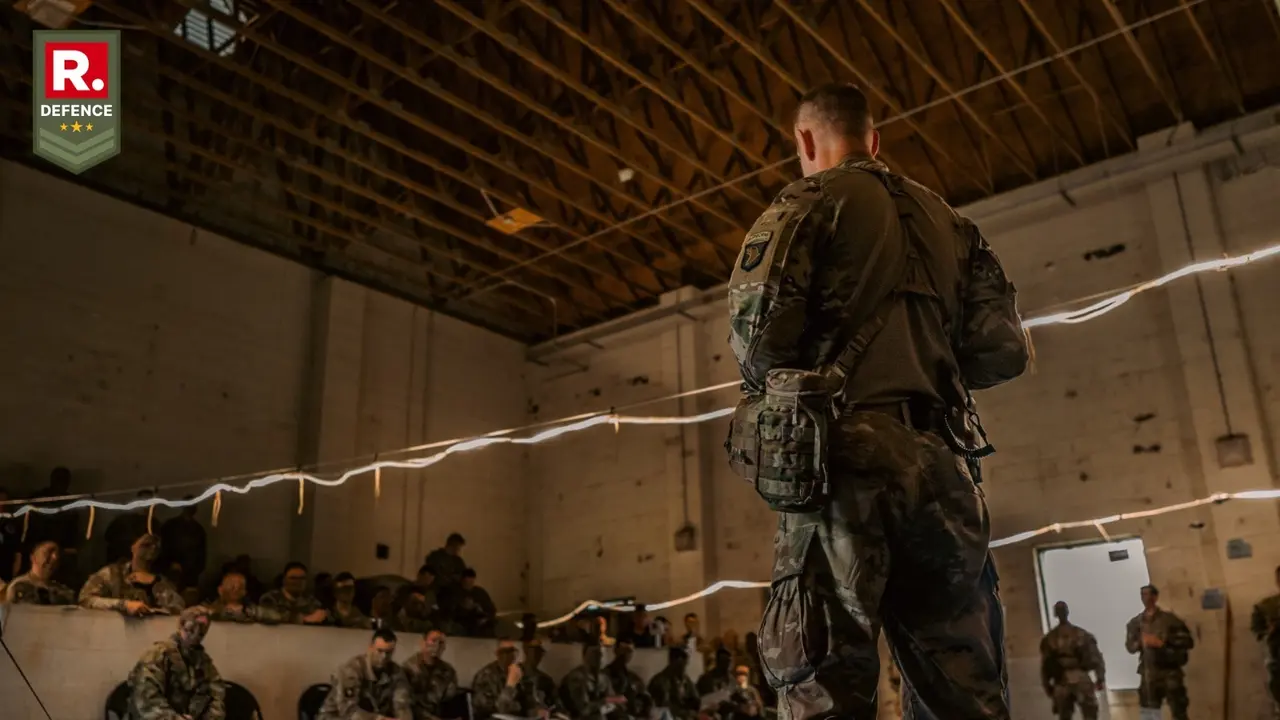Updated 26 March 2025 at 18:32 IST
U.S. Army’s 101st Airborne Tests New Division Battalions in High-Stakes Air Assault at Fort Campbell
The 101st Airborne Division has concluded Operation Lethal Eagle, a three-week-long division-level war game at its Kentucky base.
- Defence News
- 5 min read

Kentucky, USA – In a high-intensity, three-week-long training exercise, the 101st Airborne Division put its newest division-focused battalions through their paces in a large-scale air assault operation at its home base in Kentucky. Dubbed Operation Lethal Eagle, the exercise, which ran from February 19 to March 10, was designed to test division-level combat capabilities in a near-peer fight scenario, replicating modern battle conditions seen in global conflicts such as the Russia-Ukraine war.
At the heart of this year’s operation was the newly formed trio of battalions—302nd Division Intelligence Battalion, 21st Division Signal Battalion, and 326th Division Engineer Battalion—which were tasked with integrating their unique skill sets into high-tempo battlefield operations. While these units are still in their initial operational capability phase, their performance in the exercise was critical in determining how they will function in a full-scale division-level conflict, according to Col. Travis McIntosh, the division’s deputy commander.
“That 21-day division-level exercise gave us the opportunity to take a little more than 7,000 of our soldiers into the field,” McIntosh told Army Times, underscoring the largest division-level exercise conducted by the 101st in recent years.
Simulating the Future Battlefield: Massive Air Assault, Force-on-Force Drills & Joint Operations
The 101st Airborne Division, also known as the "Screaming Eagles," is known for its air assault expertise, and this exercise was no exception. The division, along with elements from the 82nd Airborne Division, Marine Corps, and the Air Force, executed a coordinated air assault with 1,100 soldiers deployed across three separate missions using 34 helicopters.
Advertisement

Their primary opponent? A highly adaptive and technologically equipped adversary, played by the “Geronimo” opposition force (OPFOR). This enemy force made full use of drones and other electronic warfare tools, simulating real-world battlefield tactics observed in Ukraine, where both sides have turned the battlefield into a cat-and-mouse game of reconnaissance, detection, and swift elimination.
The emphasis on force-on-force drills, live-fire exercises, and manoeuvre warfare down to the squad level was designed to prepare soldiers for high-intensity, multidomain operations, aligning with the U.S. Army’s push for large-scale combat readiness in an era of evolving threats.
Advertisement
The Army’s ‘TIC 2.0’ Experiment: Integrating New Technology for the Future Fight
This year’s Operation Lethal Eagle wasn’t just about boots on the ground—it was about testing the Army’s newest technological advancements in real-world combat conditions.
Soldiers integrated 65 new pieces of technology into their operations as part of the Army’s Transformation in Contact (TIC) initiative, an ongoing effort to rapidly modernize U.S. forces while they remain in active deployment cycles. Previously tested at the brigade level in divisions such as the 10th Mountain and 25th Infantry, TIC is now being scaled up to the division level under “TIC 2.0”, per the directive of Army Chief of Staff Gen. Randy George.

The division successfully designed, built, and deployed 105 drones for reconnaissance and tactical support. Despite 8-12 crashes, most drones were operational again within 24 hours, showcasing the potential of field-based rapid drone production and repair. Given the modern battlefield’s reliance on reconnaissance, the first command post spotted was often the first destroyed, forcing units to refine concealment and mobility strategies.
Extreme Weather, Real-World Challenges: Training in Arctic to Flood Conditions
The unpredictability of the battlefield isn’t limited to enemy tactics—it extends to the environment. Soldiers in Operation Lethal Eagle faced some of the harshest weather conditions possible over the three-week exercise, dealing with:
Sub-zero Arctic temperatures – As low as -6 degrees Fahrenheit with 5 inches of snow, mimicking extreme conditions similar to Eastern Europe and Arctic warfare scenarios.
Heavy flooding – Rising temperatures led to waterlogged training zones, testing the division’s ability to manoeuvre in swamp-like conditions.
Gale-force winds – Soldiers trained under 40-50 knot winds, simulating the unpredictability of deploying in harsh, remote environments.
These conditions added an extra layer of realism, similar to what the 10th Mountain Division faced during its recent TIC training rotation in Germany.
Air Mobility: The Backbone of the 101st’s Combat Strategy
One of the biggest logistical challenges of the exercise was rapid deployment, resupply, and reinforcement—all air-dependent, just as it would be in real-world combat. To execute this, the 101st Airborne turned to the Air Force’s 61st Airlift Squadron from Little Rock, Arkansas.
“We are preparing for scenarios where resupply and reinforcement can only happen through the air,” McIntosh noted, emphasizing the importance of joint operations with the Air Force for sustaining combat effectiveness in hostile environments.
What’s Next? The Road to JRTC and Further Division-Level Training
The lessons learned from Operation Lethal Eagle 2025 won’t just stay on paper. The next step is implementing refinements ahead of the 1st Brigade’s upcoming Joint Readiness Training Center (JRTC) rotation at Fort Johnson, Louisiana, in May.
With near-peer threats continuing to evolve, the 101st Airborne Division is proving that it is adapting just as fast—if not faster. The integration of new battalions, cutting-edge technology, and real-world battlefield conditions into training is ensuring that the Screaming Eagles remain America’s go-to rapid response force for any future conflict.
Published By : Yuvraj Tyagi
Published On: 26 March 2025 at 18:32 IST
